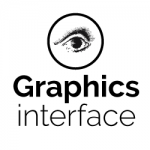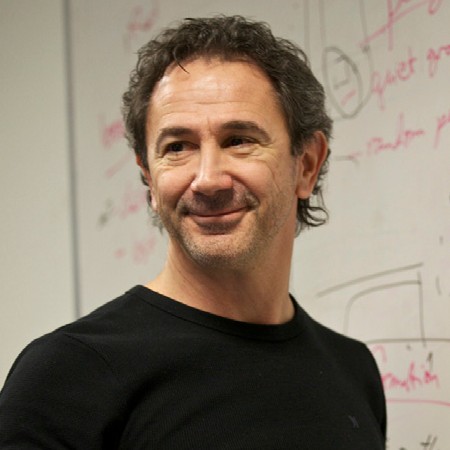Eugene is Professor and past Chair of the Department of Computer Science at the University of Toronto. He directs the Masters of Science in Applied Computing programme and has long been a member of the Dynamic Graphics Project. After earning a B.Math. degree in 1981 at the University of Waterloo and M.Sc. and Ph.D. degrees from the University of Toronto in 1983 and 1986, respectively, he became an NSERC Postdoctoral Fellow and Maitre Assistant at the University of Geneva, Switzerland. He was then awarded an NSERC University Research Fellowship in 1987 and returned to the University of Toronto where he has held a faculty position ever since. During that time, Eugene has made fundamental contributions to the field of computer science, primarily in the area of computer graphics, where he specializes in modelling and rendering. These are two of the core problems that define the essence of computer graphics. The models used in computer graphics are often ad hoc and based on convenient approximations that lack rigorous theoretical justification. Sometimes it is possible to do better. Eugene’s work is distinguished by formal, mathematical frameworks through which a deeper understanding of objects and their behaviours at various levels of complexity supports more efficient and accurate rendering.
This focus on mathematical precision arose from his early theoretical training. His doctoral research presented a mathematical formalization of raster graphics that provided a framework within which a number of problems could be understood and solutions compared. The importance of this and much of the subsequent work by Eugene has been his insistence on establishing a sound theoretical basis for all aspects of computer graphics. In this endeavour he has been extremely successful, as evidenced by the quantity and the quality of his publications in leading journals and the most prestigious international conferences. His research over more than thirty years spans most aspects of realistic computer graphics, including computer animation, modelling of natural phenomena, and illumination algorithms, as well as strong interests in imaging, software architectures, and parallel algorithms. He has written two books and authored or co-authored over 130 papers on these topics. Fourteen doctoral students and 45 masters students have graduated under his supervision.
His work on various problems related to the modelling and rendering of natural phenomena is particularly noteworthy. These solutions are inspired by the techniques of control theory, applied mathematics and physics, but they frequently are subject to a different set of constraints from similar problems found in the other mathematical sciences. In mathematical simulations, such as those conducted in computational fluid dynamics, the traditional goal is to accurately represent aggregates of energy and mass transported over time. Good numerical solutions may not lead directly to realistic or aesthetically pleasing depictions. For example, a fluid flow model might accurately predict the volume of water that flows through a river channel, but it might not provide the depictions of surface details of the waves and eddies that are of most interest in a computer animation. Eugene and his students have looked at techniques that balance the need for both visually interesting and physically plausible depictions that are computationally feasible. This has led to many notable breakthroughs and helped launch the careers of some of the current leaders in the field. Twenty years ago, with Michiel van de Panne (1993), and concurrent work by Ngo and Marks, he introduced neural networks to computer graphics. Work with Jos Stam (1995) in simulating wind, smoke, clouds and fire has set the standard for future efforts in this area and led to successful commercial deployment in hundreds of films requiring the realistic simulation and control of natural phenomena. The “wire” deformation technique, developed with Karan Singh (1998), is now ubiquitous in practical geometric modelling and animation. Michael McCool and Eugene created a simple, often-used poisson-disk sampling algorithm (1990). With George Drettakis, he developed an early penumbral shadow rendering algorithm (1994). With Victor Ng-Thow-Hing, he developed an early volume preserving skeletal muscle model (2003); indeed, his interest in biomechanical and biomedical simulation continues to this day in his collaborations with Sami Siddique and Dongwoon Lee. Derek Nowrouzezahrai and Eugene have contributed to data-driven animation and fast rendering for animated characters. With Tyler de Witt and Christian Lessig (2011-present), he developed very efficient real-time control techniques for the artistic animation of fluids as well as fast algorithms for the rotation of signals on the sphere. His work with Lessig continues on the mathematical characterization of light transport, the development of spherical orthogonal wavelets, as well as the introduction of reproducing kernel Hilbert spaces to computer graphics. Alain Fournier was his most frequent collaborator, and together they made many contributions to sampling, filtering and rendering problems.
Eugene has contributed to the computer graphics and digital media communities in many other ways. He has won two teaching awards at the University of Toronto, as well as Innovation Awards from the Information Technology Research Centre of Ontario (ITRC) for research in computer graphics, an award from Burroughs-Wellcome for biomedical research, and an NSERC Synergy Award for innovation and industrial collaboration in visual modelling with Dr. Gordon Kurtenbach of Autodesk (2012). He served as the papers chair for SIGGRAPH 2001, chair of the ACM SIGGRAPH Awards Committee (2003-2008) and the ACM Paris Kanellakis Awards Committee (2011), and general cochair of the ACM Symposium for Computer Animation (2008) and Pacific Graphics (2011). He has served on numerous scientific and corporate boards both within Canada and internationally. He has also contributed to the industrial practice of computer graphics through his role as Research Scientist and then Director of Research and Usability Engineering at Alias|wavefront (now part of Autodesk) from 1995 to 1999. He has also served on many industrial and academic boards.
Eugene is currently Principal Investigator for a $6M Canada Foundation for Innovation/Ontario Research Fund project for the construction of a digital media and systems lab. He has been selected to serve as the next Scientific Director of the Graphics, Animation and New Media Network of Centres of Excellence (GRAND), beginning in 2015. He has the distinction of having been (co-)supervised by three previous CHCCS/SCDHM Achievement Award winners: Kellogg Booth (bachelor’s paper), Bill Buxton (master’s thesis), and Alain Fournier (doctoral dissertation).





